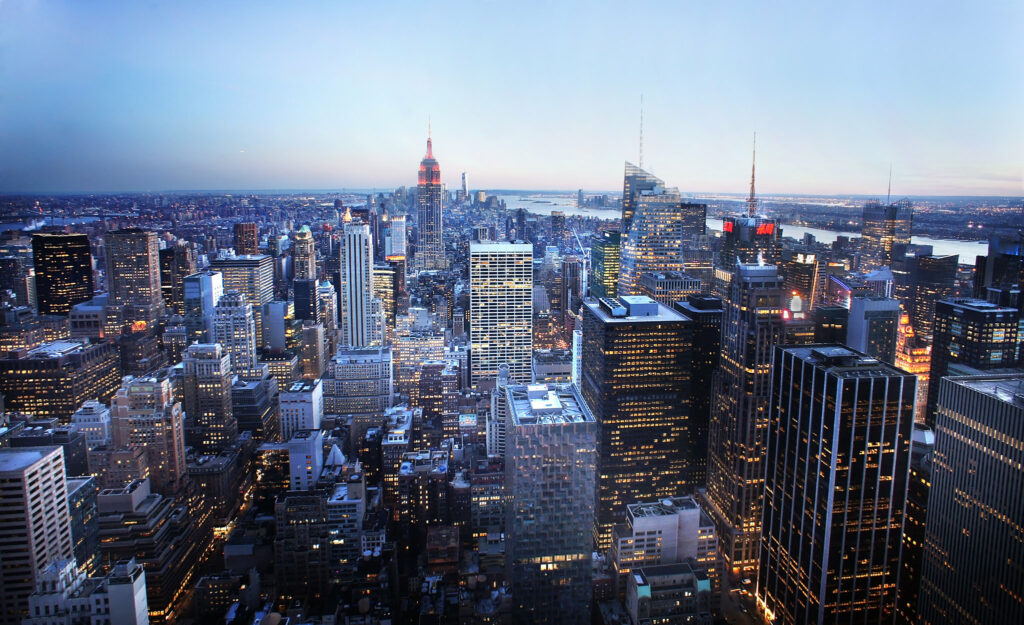New York City was forced to pay out up to $6 million to protesters who destroyed more than 13 times that amount during the George Floyd protests in 2020.
After a week of protests that devolved into rioting and looting, following George Floyd’s death at the hands of Minneapolis police officers, the NYPD arrested hundreds at an after hours protest in The Bronx.
The Human Rights Watch described the June 4 demonstration as “peaceful.”
The group said that “less than an hour into the march,” in a low-income community, where the majority of residents are Black and Brown, police kettled protesters.
Kettling is a tactic used by police to control large crowds by surrounding and corralling them into a limited area, which effectively keeps trapped.
Police were armed with riot gear, which included helmets, shields, and batons, when they moved in on the crowd right after the city’s 8 p.m. curfew went into effect.
The Human Rights Watch said that officers moved in on protestors “unprovoked and without warning,” shoved them to the ground, beat people with batons, and shot pepper spray in their faces.
The group alleged that protestors were restrained by zip ties and forced to sit on the street with their hands going numb behind their backs.
They also noted that legal observers and medics on scene were targeted by police and detained to keep them from doing their work.
Around 263 people were arrested at the demonstration, and most of them were charged with “class B misdemeanors for curfew violations or unlawful assembly.”
“The New York City police blocked people from leaving before the curfew and then used the curfew as an excuse to beat, abuse, and arrest people who were protesting peacefully,” said HRW director Ida Sawyer.
“It was a planned operation with no justification that could cost New York taxpayers millions of dollars.”
At the time, former NYPD Police Commissioner Dermot Shea said the protest was anything but peaceful, and people were armed for “mayhem.”
“They put out posters advertising that they were going to burn things down, that they were going to injure cops, that they were going to cause mayhem,” he remarked at a press conference the next day.
He said that police seized hammers, gas masks, lighter fluid, fireworks and a gun during the arrests.
“In this particular incident, we had information regarding the intent to destroy property, injure cops and to cause mayhem,” Shea commented.
“This wasn’t again about protests, this was about tearing down society.”
He tweeted out a photographic evidence of some of the items taken off protestors, which included handcuffs, knives, a crowbar and a sledgehammer.
“These are not the tools of peaceful demonstrators,” Shea captioned the post.
“Conversely, these ARE the tools of criminals bent on causing mayhem & hijacking what we all know is a worthwhile cause.”
At the press conference, he noted that the protest was full of “outside agitators,” and that his cops went in with “a plan which was executed nearly flawlessly.”
Rioting inspired by George Floyd’s murder spurned a spree of vandalism, looting, and arson between May 26 and June 8, caused $1-2 billion in damage across the country.
In New York alone, ten consecutive days of violence brought about two deaths, damage to around 330 buildings, and an estimated $82 million in property damage.
Nearly three years later, the city has agreed to pay the 300 protesters confined by the cops $21,500 each.
Those who were “unlawfully” charged with a crime after the incident will each receive an additional $2,500.
The settlement in the mass-arrest federal class-action lawsuit, which still must be signed off on by a Manhattan judge, will be the largest per-person payout in the city’s history.
“Two-and-a-half years after the protests of 2020, much of the NYPD’s policies and training for policing large-scale demonstrations have been re-envisioned,” the NYPD commented in a statement.
Their updated policies are “based on the findings of the department’s own, self-initiated analyses and on the recommendations from three outside agencies who carefully investigated that period.”
“The NYPD remains committed to continually improving its practices in every way possible,” the department stated.
Years later and the city’s crime rate has continued to skyrocket as lax no-bail laws have made crime pay even more.
In the midst of a massive theft wave, the NYPD has encouraged store owners to make people take off their masks prior to entry.
They said standard COVID-19 measures are making it easier for crooks to be identified by security cameras.
“We are asking the businesses to make this a condition of entry, that people when they come in, they show their face, they should identify themselves,” said NYPD Chief of Department Jeffrey Maddrey.
“People are coming up to our businesses, sometimes with masks, sometimes masks, hoods and latex gloves, and they’re being allowed, they’re being buzzed in and allowed to enter the store and we have a robbery,” he explained.
“We need our businesses to be proactive and do their due diligence,” Maddrey concluded.
“We need to make sure people are identifying themselves.”

